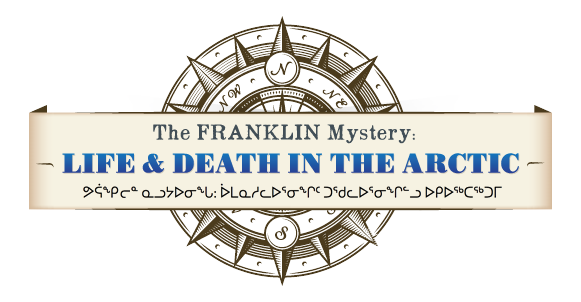Interview with Dorothy Eber

Dorothy Eber is a journalist and author of a series of books based on Inuit oral history, including Encounters on the Passage: Inuit Meet the Explorers, published in 2008.
Lyle Dick & Julie Perrone - Interview Dorothy Eber relating to her knowledge and interpretations of the missing last expedition of Sir John Franklin
1) When and how did you first hear of the missing last expedition of Sir John Franklin?
Well, I grew up in England and Sir John’s disappearance and the disappearance of the ships was, even in my childhood, it was talked about a lot, I’m sure more than it probably would have been in Canada. So, my grandmother would talk about it and I learned about it that way initially.
2) What happened to Franklin's party?
After I began to work in the North, I did hear stories about Franklin. Now, I heard more stories about other expeditions, because other expeditions the Inuit had more contact with them. Sir John Ross, for instance, who spent four winters in the Arctic and got his men home. Now Franklin, they didn’t appear to have had a great deal of contact with. But they did know about terrible death scenes, so I did hear a certain amount about Franklin.
3) Why did they fail?
One of the things that I’ve read in the literature, but I also heard it from people on King William Island, that when the white men left their ships, they didn’t seem to be right. The Inuit thought they might be sick. They would scream and yell and didn’t seem to want to be helped. I have read that it’s thought that they might have been poisoned by some of the meat in the tin cans onboard ship. So I always thought that was quite an element in why they failed: that they weren’t well. And there had been quite a lot of deaths before the ships were abandoned and half the officers had already died.
4) Where are the ships?
The ship that sank on the west side- I do think that a ship sank somewhere on the west side. Pieces were discovered and assumed to come from the Franklin wreck by the Finlayson Island, that is down below. These islands are sort of below Cambridge Bay I think. And when they were taken back to England, it was assumed that they did come from a Franklin ship. But the other ship, the second ship, I heard from people that one ship had gone around the North over the top of the island, of King William Island, and had ended up on the east side and there certainly are rumours that have been around for many many years that a ship has been sighted at different places on the east side near the Boothia Peninsula. And the last specific place I heard was that a possible ship had been sighted in Josephine Bay, which is about thirty miles above the Matty Islands.
5) How do you know?
Well, I only know what I’m told. So I recorded stories from people who have stories to tell, and what I learnt came from them. My interpreter, as I mentioned, was remarkably helpful. Tommy Anguttitauruq. He spoke wonderful English and he was the grandson of people who had worked for Rasmussen. His grandparents had worked for Rasmussen. So I thought maybe some of the stories I heard had already been told to Rasmussen.
6) Why do you care?
Well, it is a mystery. It’s become, I think, just something that’s so absolutely fascinating. How could these ships that were the best equipped ever sent to the North at a time when people in England thought that there wasn’t a lot more to discover- how was it that they just disappeared totally? It’s a mystery and one would like to know the answer.
7) What is the significance of Franklin's last expedition?
I think perhaps the significance might be that the North at that time was just an extraordinarily difficult place to explore. They didn’t have climate warming in any way and they didn’t have the means of communication that we have today.


